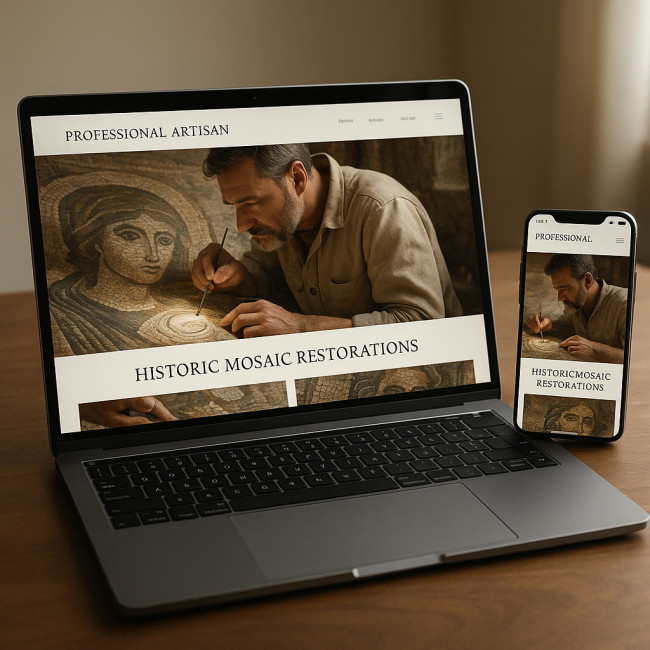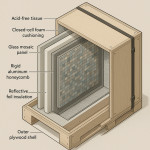Restoration credentials that convince heritage boards to shortlist your mosaics
You have a breathtaking mosaic ready to revive a landmark, but heritage boards only approve artisans with airtight restoration credentials. This guide shows you exactly which documents, tests, and proof points elevate your application from nice-to-have to unmissable.
Why heritage boards gatekeep so strictly
Public monuments, listed façades and UNESCO sites carry financial, cultural and emotional weight. Boards must protect those assets for decades, sometimes centuries. Your restoration dossier, therefore, must prove:
- Materials compatibility with existing substrates and original tesserae.
- Reversibility of interventions should future techniques improve.
- Long-term maintenance plans that minimise public spend.
- Legal compliance with conservation charters like the Venice Charter.
Six restoration credentials that fast-track your mosaic proposal
1. Laboratory test reports on material compatibility
Submit third-party lab analyses showing your grout, adhesives and replacement tesserae are pH-neutral and thermal-expansion-compatible with the original fabric. Highlight accelerated-aging results that demonstrate colourfastness over 50 freeze–thaw cycles. Boards love numbers.
2. Non-destructive investigation (NDI) certificates
Infra-red thermography or ultrasonic pulse velocity scans reveal hidden voids without chipping away history. Include an NDI certificate plus annotated heat maps. These visuals reassure boards that you understand subsurface risks before touching a single tile.
3. Conservation methodology aligned with ICOMOS guidelines
Attach a concise methodology statement referencing specific ICOMOS principles—particularly minimum intervention and respect for original materials. Use the board's own language: they usually cite these charters in their tender briefs.
4. Environmental impact assessment
Many boards now prioritise sustainability. Provide a micro carbon audit of your material sourcing and site logistics. If you implement recycled glass tesserae or low-VOC sealants, break down the emission savings in kilograms of CO₂e.
5. Preventive maintenance schedule
Create a table that maps inspection intervals, cleaning methods and budget estimates for 30 years. Pair this with your experience negotiating maintenance clauses; boards need proof you won't vanish after inauguration.
| Year | Inspection Type | Estimated Cost (€) | Responsible Party |
|---|---|---|---|
| 1 | Visual & moisture scan | 800 | Artist studio |
| 5 | Grout tensile test | 1 100 | Certified lab |
| 10 | Full surface clean | 3 500 | Municipal crew |
6. Proof of previous heritage-grade success
Nothing outperforms experience. Showcase at least three case studies where your team completed restorations under similar climate loads. Embed high-resolution before-and-after images, or better, an immersive 3D mock-up accessible via QR code in your PDF dossier.
Structuring your dossier for instant board approval
- One-page executive summary with key data points.
- Technical appendices (lab tests, NDI scans, material data sheets).
- Risk-mitigation matrix (weather, vandalism, structural movement).
- Maintenance and cost roadmap.
- Credentials: degrees, conservation workshops, and peer-reviewed articles.
Pro tips that elevate your credibility
- Get an external peer review. Ask an accredited conservator to sign off on your methodology. Third-party validation carries weight.
- Reference local planning laws. Quote the exact clause requiring reversibility to show due diligence.
- Map community benefits. Offer training workshops for local artisans—boards love social impact.
- Highlight logistics expertise. Link to your safe-crating know-how (oversized freight tips) to reassure boards about transport risks.
How to stand out digitally before the tender opens

Boards and consulting architects often conduct pre-screening online. Make sure your studio listing on specialised craft-design directories already showcases your restoration track record. Update metadata, add alt-text that includes “mosaic restoration”, and follow the SEO roadmap for mosaic services to surface early in their research.
Checklist: documents to attach every time
- Copy of professional indemnity insurance (minimum €2 million).
- Health-and-safety plan compliant with ISO 45001.
- Signed collaboration letters from structural engineers.
- Material Safety Data Sheets (MSDS) for all chemicals.
- Waste-management protocol for demo debris.
Mini case study: 1920s railway hall façade

When Studio Aureum submitted its bid to restore a 1920s mosaic façade, the team led with a 12-page lab report on sulphate resistance. They supplemented this with drone-captured orthophotos and a 40-year cleaning schedule costed at €22 000. The heritage board pre-selected them within three weeks, even though two rival studios boasted larger teams. The decisive factor? Measurable durability data and a transparent maintenance plan.
FAQ
- Do I need a conservation degree to win public tenders?
- No, but you must collaborate with or be supervised by a conservator who holds accredited status. Boards focus on collective competence.
- How detailed should my maintenance plan be?
- Include at least 30 years of projections with cost brackets and responsible parties. The more granular the better.
- Is 3D scanning mandatory?
- Not always, yet providing digital twins early accelerates approvals and mitigates later disputes about scope.
- What insurance level is standard?
- In the EU, €2 million professional indemnity is common; some national monuments may demand €5 million.
Quick knowledge check
Takeaway
Restoration credentials are more than paperwork; they are your proof of stewardship. Combine scientific data, legal compliance and long-term care planning, and boards will see you not just as an artist, but as a guardian of cultural heritage.
Ready to build a bulletproof dossier? Audit your current documents against the checklist above, strengthen any weak spots, and watch those shortlists materialise.











